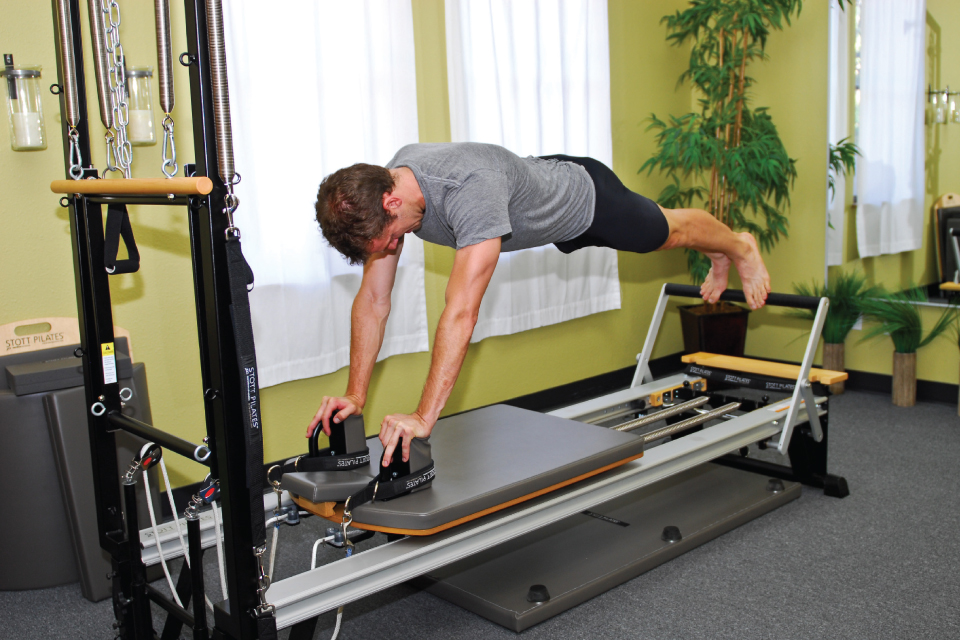Who Can Practice Pilates?

Pilates seems to wage a never-ending war on misconception. I am often asked how it differs from yoga, how difficult or complicated it is, and—perhaps most confusingly— whether it is suitable for men. The question alone is quite informative, suggesting that the athletic world is full of exercises that divide along sharp gender lines: Some things, it is assumed, are simply not masculine enough for men to bother with. This is especially true with Pilates, where the pervasive myth is that it is the exclusive province of women.
Pilates…Isn’t That a Girl’s Thing?
History may be the most simple way of dismissing this assumption: Most people don’t know that Pilates was in fact invented by a man—Joseph Pilates—for men who had been injured during World War I. His method became more popular among women when he moved to New York City, where he opened his business near many dance studios. This led to his discovery among the dance community, and this affiliation remains alive today.
Today, the Pilates system of movement remains similar to its initial intent, offering a challenging way to improve fitness levels as well as reduce the chance of injury, provide rehabilitation through bringing balance to musculature, and increase flexibility, posture, balance, and coordination. Because of these benefits, men are increasingly turning to Pilates as a form of cross-training: Tiger Woods, Jason Kidd, LeBron James, David Beckham, Tim McGraw, and Hugh Grant are just a few examples. Many recreational athletes such as runners and triathletes are also turning to Pilates. But why?
A Pilates Overview
It is worth reiterating: Pilates was invented by a man for men. And not just any man, but a manly man. Photos of Joseph Pilates well into his eighties show a very chiseled physique. This was a man with military experience who was also a body builder, wrestler, gymnast, boxer, skier, and diver. He pulled from these different modalities in developing the form of movement now known as Pilates. This is why Pilates provides the practitioner with the flexibility of yoga, the coordination and grace of gymnastics, the strength of boxing and skiing, and the stamina and core strength of swimming. It is a system that delivers extremely well-rounded fitness results, something both ideal for and desired by men and women alike.
An important premise of Pilates is balance. Most men, athletic or not, have muscular imbalances—whether it’s from hours spent on a bike, sitting in front of a computer, or running. These imbalances can lead to injury and cause inefficiencies in sports. Pilates works the body through all planes of movement and utilizes underdeveloped muscles, making individuals less injury prone and stronger in their sport.
Another benefit of Pilates is increased flexibility. The type of stretching found in Pilates is unique from other forms of stretching in that the practitioner uses the muscle in both concentric (shortened) and eccentric (lengthened) positions. Studies have shown that stretching while strengthening muscles is safer—a muscle should only be stretched as far as it is strong. Matching up a muscle's strength with flexibility makes the muscle that much more powerful. Holding stretches for extended periods of time and going “deeper” into the stretch can lead not only to imbalances within the body but can also cause permanent damage to ligaments as well as instability in the joints.
Why Pilates is Manly
Masculinity is more than cosmetic. Gone are the days when the only hot commodities on a man were his chest and biceps. A well-rounded fitness routine for a man will keep him injury resistant and muscularly balanced. A Pilates routine will keep a man’s spine healthy, which promotes good posture as well as a good set of abdominals.
Health is increasingly trending toward preventative measures, and Pilates is a fantastic example of this. Doctors and physical therapists now commonly refer patients to Pilates since it is one of the few forms of movement that can be done on a daily basis that will build up one’s body instead of breaking it down.
What to Look for in a Studio
As with all things, find an instructor who is knowledgeable about movement and able to provide customized workouts targeting goals and individual needs. Some men feel more comfortable in smaller studios or in studios that offer classes specifically for men. Not all Pilates classes are the same, nor is every Pilates instructor. Try a few places and instructors until you find a spot that brings out YOUR manliness.
The Reformer is the most popular piece of Pilates equipment. Though it may look intimidating, its simplicity and versatility are its strongest features. The top photo is of a dynamic plank, with added shoulder presses. The flat part of the Reformer—the carriage—glides back and forth on metal rails, bound by springs. Keeping the carriage stable and controlling its movement demands great core strength. The bottom photos show the array of muscle groups that can be focused on when using the Reformer: obliques, back, glutes, and hamstrings. Anything you can do in a gym can be better targeted in a Pilates studio.






